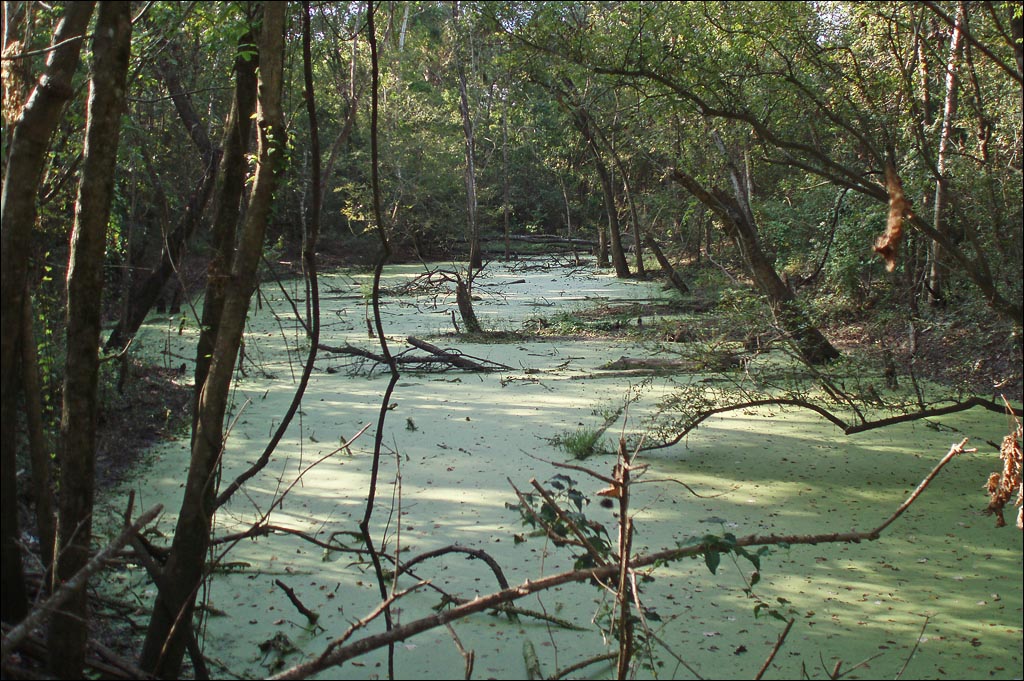Riparian buffers and bottomland areas occur at the edge of stream systems. These areas are commonly inundated by overbank flooding from the nearby stream.
Bottomlands are the low-lying floodplain of a river. They are commonly associated with bottomland hardwood forests and forested wetland swamps. Forested wetlands are perhaps the most rapidly disappearing wetland type in the US due to logging and draining of the swamps. Additionally, the annual supply of water needed to replenish these systems is being diminished as dams and reservoirs are constructed.
Along the upper Texas Gulf Coast, one critical bottomland hardwood habitat is the Columbia Bottomlands, where the Brazos, San Bernard, and Colorado River systems drain into the Gulf. A second is the Trinity River Bottomlands, where the Trinity River drains into Galveston Bay.
Riparian buffers are strips of vegetation that line a river or stream. These buffers help cool the stream water and provide wildlife habitat and travel corridors. Riparian buffers also play a critical role in filtering nutrients out of runoff before it reaches streams. The roots of a riparian buffer stabilize the stream bank, preventing erosion.
A healthy riparian buffer is a key component of sustainable soil conservation. Less erosion allows for soil development and nutrient retention on land, leading to increased soil quality and increased water quality. The better soil quality results in more water filtration, manure breakdown, less erosion, and less pollution.
These critical ecosystems hosts many wildlife species and are crucial for downstream water quality.

